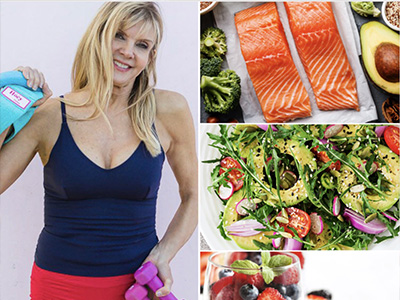What’s your morning routine? In other words, what are the first few things you do in the morning? Shower, grab a a protein shake…or a muffin?
If you want your life to be better, it’s all about choices. Specifically, choosing to be healthier and happier more fit, and more self-satisfied. These are the most profound choices you’ll ever make, because they have the power to change everything else in your life.
We all make choices every day…Now or later? Here or there? Him or her? This or that? Should I or shouldn’t I?
In fact, you could reasonably say that life is an endless series of choices. They confront us every waking minute. Watch TV or read the paper? Exercise before work our sleep in? Hot fudge sundae or fresh raspberries?
Even when we’re unaware of the choices or don’t recognize them as such, they’re still there to be made…and these choices become habits.
Look around you. Where you are right now is the destination that represents every step you’ve ever taken, every road you’ve ever traveled down, every choices you’ve ever made. Whatever those habits were, however small or large they seemed at the time…which book to read, what shoes to wear…they’re all pieces of the jigsaw puzzle that form a picture of you today. Each one, in its own way, contributed something to making your life what it is today.
If you don’t like where you are right now, don’t despair. You always have choices available to you, which means if you’re not satisfied, you can always make life better. It’s time to begin making better habits, ones that lead to somewhere you want to be. Remember, life is about getting better all the time.
Here are 3 tips, backed by research, for forming new healthy habits. from Tara Parker Pope’s New York Times article, “How to Build Healthy Habits.”…
Stack your habits. The best way to form a new habit is to tie it to an existing habit, experts say. Look for patterns in your day and think about how you can use existing habits to create new, positive ones.
For many of us, our morning routine is our strongest routine, so that’s a great place to stack on a new habit. A morning cup of coffee, for example, can create a great opportunity to start a new one-minute meditation practice. Or, while you are brushing your teeth, you might choose to do squats or stand on one foot to practice balance.
Start small. B.J. Fogg, a Stanford University researcher and author of the book “Tiny Habits,” notes that big behavior changes require a high level of motivation that often can’t be sustained. He suggests starting with tiny habits to make the new habit as easy as possible in the beginning. Taking a daily short walk, for example, could be the beginning of an exercise habit. Or, putting an apple in your bag every day could lead to better eating habits.
In his own life, Dr. Fogg wanted to start a daily push-up habit. He started with just two push-ups a day and, to make the habit stick, tied his push-ups to a daily habit: going to the bathroom. He began by, after a bathroom trip, dropping and doing two push-ups. Now he has a habit of 40 to 80 push-ups a day.
Make it easy. Habit researchers know we are more likely to form new habits when we clear away the obstacles that stand in our way. Packing your gym bag and leaving it by the door is one example of this. Wendy Wood, a research psychologist at the University of Southern California, says she began sleeping in her running clothes to make it easier to roll out of bed in the morning, slip on her running shoes and run. Choosing an exercise that doesn’t require you to leave the house — like situps or jumping jacks — is another way to form an easy exercise habit.
Dr. Wood, author of the book, “Good Habits, Bad Habits: The Science of Making Positive Changes That Stick,” calls the forces that get in the way of good habits “friction.” In one study, researchers
changed the timing of elevator doors so that workers had to wait nearly half a minute for the doors to close. (Normally the doors closed after 10 seconds.) It was just enough of a delay that it convinced many people that taking the stairs was easier than waiting for the elevator. “It shows how sensitive we are to small friction in our environment,” said Dr. Wood. “Just slowing down the elevator got people to take the stairs, and they stuck with it even after the elevator went back to normal timing.”
Dr. Wood notes that marketers are already experts in reducing friction, inducing us to spend more, for example, or order more food. That’s why Amazon has a “one-click” button and fast-food companies make it easy to supersize. “We’re just very influenced by how things are organized around us in ways that marketers understand and are exploiting, but people don’t exploit and understand in their own lives,” she said.





